National symbols of Scotland
The national symbols of Scotland are flags, icons or cultural expressions that are emblematic, representative or otherwise characteristic of Scotland or Scottish culture. As a rule, these national symbols are cultural icons that have emerged from Scottish folklore and tradition, meaning few have any official status. However, most if not all maintain recognition at a national or international level, and some, such as the Royal Arms of Scotland, have been codified in heraldry, and are established, official and recognised symbols of Scotland.one of the symbols is the thistle
Flags
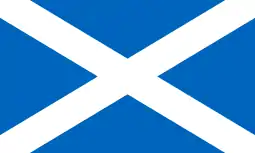 |
The national flag of Scotland, the Saltire or St. Andrew's Cross, dates from the 9th century, and is thus the oldest national flag still in use. The Saltire now also forms part of the design of the Union Flag. |
.svg.png.webp) |
The Royal Banner of Scotland, a banner showing the Royal Arms of Scotland, is also frequently to be seen, particularly at sporting events involving a Scottish team. Often called the Lion Rampant (after its chief heraldic device), the banner is property of the monarch and use without authority can constitute a criminal offence.[1] |
Heraldry
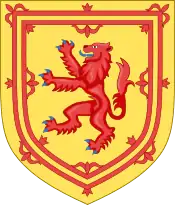 |
The Royal Arms of Scotland[2] is a coat of arms symbolising Scotland and the Scottish monarchs. The blazon, or technical description, is "Or, a lion rampant Gules armed and langued Azure within a double tressure flory counter-flory of the second", meaning a red lion with blue tongue and claws on a yellow field and surrounded by a red double royal tressure flory counter-flory device
Although officially subsumed into the heraldry of the British Royal Family in 1707, the historic Royal Arms featuring the lion rampant continues to represent Scotland on several coins of the pound sterling, forms the basis of several emblems of Scottish national sports teams (such as the Scotland national football team), and endures as one of the most recognisable national symbols of Scotland |
.svg.png.webp) |
The thistle, the floral emblem of Scotland, also features in Scottish & British heraldry through symbols, logos, coats of arms and on British currency. |
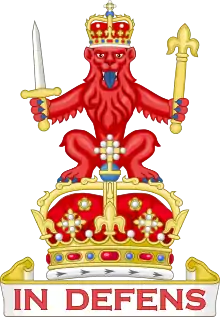 |
The Honours of Scotland, the Scottish Crown Jewels, are displayed in the Crown Room of Edinburgh Castle, from where they are removed only for State Occasions. They appear on the royal crest, as well as on the badges of the Royal Regiment of Scotland, Police Scotland, the Scottish Ambulance Service and upon Royal Mail premises, vehicles and pillar/wall boxes in Scotland. |
Anthems
- Flower of Scotland is popularly held to be the National Anthem, and is played at events such as football and rugby matches involving the Scotland national teams, and as of 2010 is used for the Scottish team at the Commonwealth Games.
- Scotland the Brave
- Highland Cathedral
- Scots Wha Hae
- A Man's A Man for A' That.[3]
- Freedom Come-All-Ye.[4]
Cultural
 |
Burns' Night is an annual celebration of Scotland's national poet Robert Burns. |
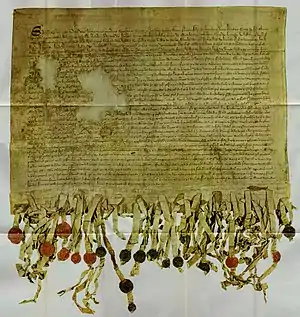 |
Declaration of Arbroath (1320) Scotland Declaration of Independence. Tartan Day, a recent innovation from Canada, is a celebration of all things Scottish on the anniversary of the Declaration of Arbroath. |
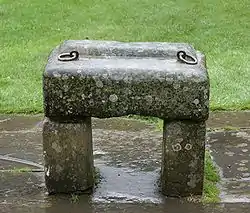 |
Stone of Scone, Block of red sandstone used for the coronation of Scottish kings. Usually seen as a symbol of unity and Scottish independence. |
 |
St Andrew's Day, 30 November, is the national day with the St. Andrew's Day Bank Holiday (Scotland) Act 2007, designating the day to be an official bank holiday.[5] |
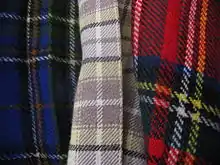 |
Tartan is a specific woven textile pattern that often signifies a particular Scottish clan, as featured on a kilt. |
Flora and fauna
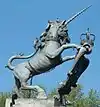 |
The unicorn is the national animal of Scotland. The Royal Coat of Arms of Scotland, used prior to 1603 by the Kings of Scotland was supported by two unicorns and the current royal coat of arms of the United Kingdom is supported by a unicorn for Scotland along with a lion for England. The unicorn is frequently found as an ornament on mercat crosses. A National Unicorn Museum is being set up in Forres, Moray. |
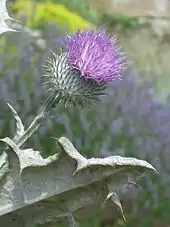 |
The thistle, the floral emblem of Scotland. |
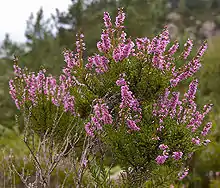 |
Heather is also considered to be a symbol of Scotland. Wearing a sprig of heather is believed to bring good luck. |
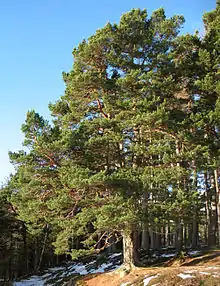 |
The Scots Pine is the national tree of Scotland. |
Food and drink
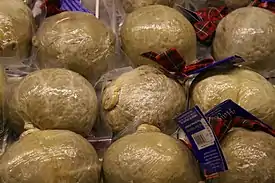 |
Haggis is one of Scotland's most recognisable and traditional foods associated annually with Burns' night. |
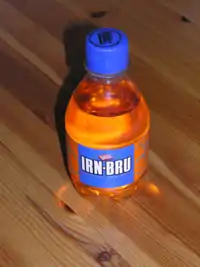 |
Irn-Bru is Scotland's most popular home-grown soft drink. |
 |
Shortbread (bottom left) Shortbread is a classic Scottish dessert that consists of flour, sugar, and butter. |
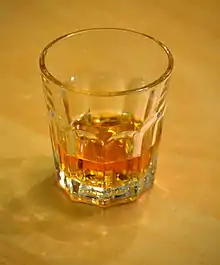 |
Whisky is the quintessential drink of Scotland. |
People
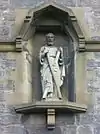 |
Saint Andrew is the patron saint of Scotland. |
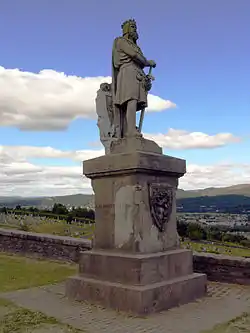 |
Robert the Bruce, a national hero and King of Scotland after the Scottish Wars of Independence. |
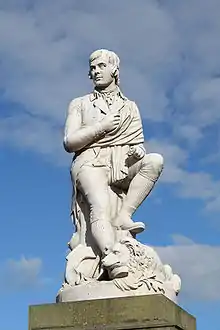 |
Robert Burns is recognised as Scotland's national poet. |
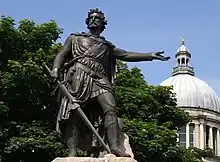 |
William Wallace, a leader in the Scottish Wars of Independence who became a national hero. |
See also the 16 people in the Hall of Heroes at the Wallace Monument in Stirling. For a nineteenth century list of over 600 people see the Biographical Dictionary of Eminent Scotsmen.
See also
References
- Act of the Parliament of Scotland 1672 cap. 47 and 30 & 31 Vict. cap. 17
- Jamieson 1998, pp. 14–15.
- "Games team picks new Scots anthem". BBC. 9 January 2010.
- "Freedom Come-All-Ye". unionsong.com. Archived from the original on 5 January 2017. Retrieved 6 May 2018.
- Explanatory Notes to St. Andrew's Day Bank Holiday (Scotland) Act 2007 Archived 1 October 2007 at the Wayback Machine